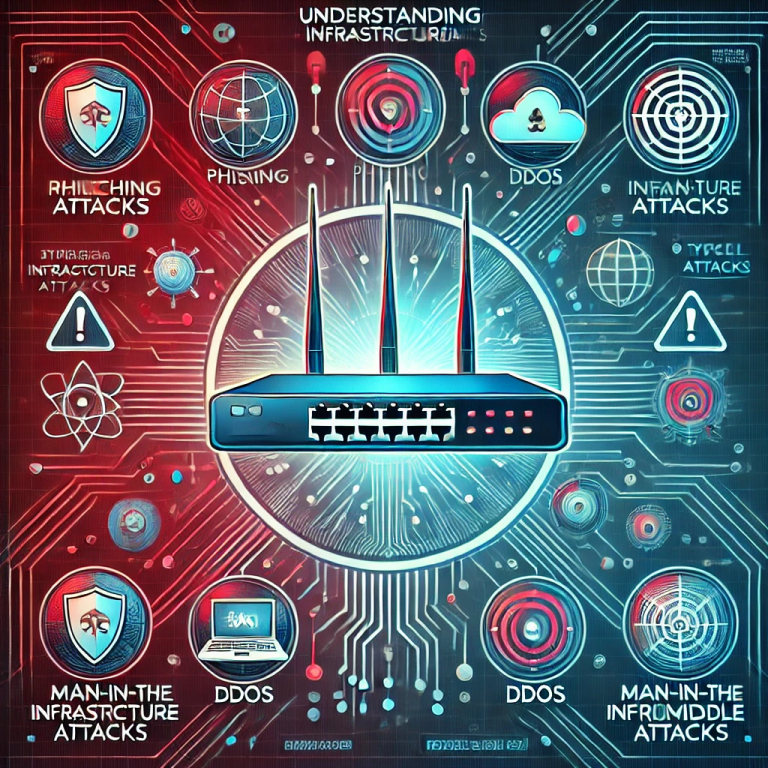In today’s digital age, the security of network infrastructures has become more critical than ever. As cyber threats continue to evolve, one of the primary targets for attackers is routers and the underlying network infrastructure. This article explores the rising threats of router and infrastructure attack, how they impact businesses, and ways to safeguard your network.
What Are Router and Infrastructure Attacks?
Router attacks refer to unauthorized access or malicious manipulation of a network router. Since routers are pivotal in directing traffic between devices, they are prime targets for cybercriminals. Infrastructure attacks encompass a broader range of attacks, including threats to servers, switches, and other core components that make up an organization’s network.
Common Types of Router and Infrastructure Attacks
1. Man in the Middle Attack (MITM Attack)
Cybercriminals intercept data transmitted between a user and a network, gaining access to sensitive information. This is often done by exploiting weaknesses in routers to position themselves between communications.
2. Distributed Denial of Service (DDoS)
Attackers flood the network with excessive traffic, overwhelming routers and infrastructure, causing service disruptions. DDoS attacks are commonly used to crash systems or compromise a company’s reputation by making its services unavailable.
3. Router Hijacking
In this attack, the cybercriminal gains control over the router by exploiting default passwords or outdated firmware. They can redirect traffic, monitor communications, or introduce malware into the network.
Attackers tamper with the DNS (Domain Name System) configurations on a router, redirecting users to malicious websites without their knowledge.
5. Configuration Exploits
Many routers are deployed with default settings that are not optimized for security. Attackers exploit misconfigurations or weak passwords to take control of routers and compromise the entire network.
Impact of Router and Infrastructure Attack on Businesses
Router and infrastructure attacks pose significant risks to organizations, including:
– Data breaches: Attackers can steal sensitive information like customer data, financial records, and intellectual property.
– Business interruptions: DDoS attacks and other disruptions can lead to downtime, costing businesses time and money.
– Loss of customer trust: Once compromised, a company’s reputation can suffer, leading to a loss of trust and a decline in customer loyalty.
How to Protect Against Router and Infrastructure Attack
Securing your network starts with understanding the vulnerabilities and implementing the right protections. Here are some key steps:
1. Regularly Update Firmware
Keep router and infrastructure device firmware up to date. Manufacturers frequently release patches to address known vulnerabilities, so ensure you’re using the latest versions.
2. Change Default Passwords
Never rely on factory-default passwords for routers or network devices. Use strong, unique passwords to reduce the risk of unauthorized access.
3. Implement Strong Encryption Protocols
Ensure your network uses the latest encryption standards like WPA3 for Wi-Fi security, preventing unauthorized access to your communications.
4. Network Segmentation
Divide your network into segments, isolating sensitive data and resources. This limits the spread of an attack if one part of your network is compromised.
5. Use Firewalls and Intrusion Detection Systems (IDS)
Firewalls and IDS tools help monitor traffic and detect unusual activity that could signal an infrastructure attack. These systems can block unauthorized access and alert you to potential threats in real-time.
6. Conduct Regular Audits
Perform routine security assessments and audits on your network infrastructure. This ensures you stay aware of potential vulnerabilities and areas needing improvement.
7. Employ VPNs for Remote Access
When allowing remote access to your network, use virtual private networks (VPNs) to encrypt the data between users and the network, adding a layer of protection from MitM attacks.
Conclusion
With the rise of sophisticated router and infrastructure attacks, businesses must take proactive measures to safeguard their networks. From updating firmware and changing default passwords to using encryption and conducting regular audits, there are several strategies organizations can implement to minimize risks. By prioritizing network security, businesses can protect their valuable assets and maintain trust with customers in a digital-first world.
Securing your network now can prevent costly data breaches and downtime in the future. Stay vigilant and invest in comprehensive protection strategies to combat these evolving threats.



